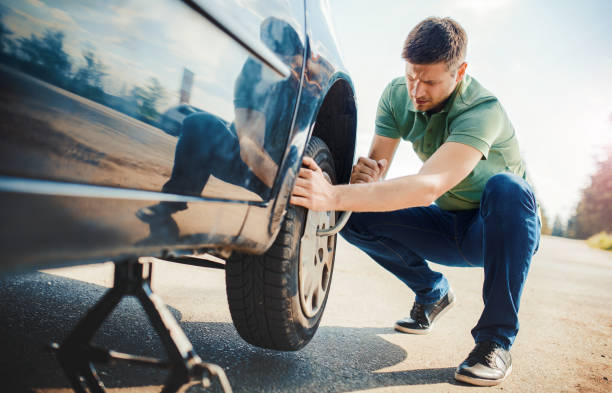
The amount of tread on your cheap tyres Southampton is key to how well your car drives and stays safe. The tread grips the road, which helps the car steer and maintain stability, more so when driving on the road in wet conditions. During rainy weather, it pushes water from beneath your tyre so you don't slip.
The depth of the tyre tread includes how deep the grooves go in your tyre. It's measured in mm or inches. These grooves help the tyre grip the road and push water away, making driving safer, especially on wet roads.
Those treads on your tyre will help to ensure that it is the punctures that are avoided; it is what the road comes in contact with before, and it can get through to the inside part of the tyre that holds the air.
The more profound the tread, the more rubber the road comes into contact with. This extra contact helps spread out the car's weight and makes punctures less likely.
The tread also pushes water off the tyre, lessening the risk of running over something sharp on the road that might puncture it.
Should your tyres wear unevenly, this could indicate incorrect alignment and/or suspension problems with your car. Have this looked at by a professional.
It should be part of your routine to check your tyre tread depth. You keep your passengers safe, prolong your tyres' lives, and have better fuel efficiency.
Here are some problems that result from not taking care of your tyre tread:
What we call the tread on a tyre is that part of it that remains in contact with the ground. The tread wear means that the chances that something could pierce the tyre are many. The best thing is to mend the tread when you feel there is a problem with it.
Knowing the depths of tyre treads regularly and ensuring the preservation of the same can safeguard the wheel from all sorts of damages that are possibly prone to getting punctured.
Replace tyres with treads less than 1.6 mm in thread depth. Such tyres will more easily cause accidents because the tread is depleted.
This can be achieved by:
Examining your tyres for the tread wear indicator (TWI). This would normally be a small raised bar located within the grooves of the tread. When the wear of this bar reaches the tread wear indicator, this tyre shall be replaced.
Measure the tread depth at the shallowest point of the groove along the circumference using a tread depth gauge. The gauge can be inserted into a main tread groove, perpendicular to the tyre, three times at different locations around and across the tread.
Compare the tread level to a legal minimum or manufacturer recommendation.
If the current tread depth is below the legal minimum or the maker's level, then the answer is to replace the tyre.
Maintaining Tyre Tread Depth
The tyre tread gets worn out from driving a car. One is supposed to maintain tread depth on the tyres. This will ensure that the proper grip on the road is maintained and the car remains stable while on the move.
The tread on tyres will avoid any form of puncturing and other related damages that could have been caused if the stride becomes very low. You should examine how long the tyre print lasts at regular intervals and, importantly before you start a long drive after changing weather patterns.
Whenever the ground clearance falls to 1.6 mm or less, the tyres ought to be renewed.
Ensure you read the vessel guide for information on how to balance and turn tyres after travelling between 6,000 - 8,000 miles. In this manner, puncture damage and perhaps uneven tread wear are avoided.
The Best-Recommended Tyre Tread Depth
Recommended tread depth The general recommended depth for tyre tread is 4/32 inches and above. The least allowable legal depth for the car tyre tread in the US is 2/32 inches. However, it has to be noted that specific tyre brands can have different tread depths recommended for their tyres.
To determine what amount of tread is acceptable, you can check your vehicle's owner's manual or call the tyre company. Further, measure the tread depth of your tyres from time to time and replace them if they are worn out.
Keeping your tyres at the proper depth (typically 4/32 recommended by
Goodyear Tyres Southampton
when new is important for your safety and the handling of your car. Good tread helps your tyres have a better grip on the road, push away water so that you do not slide, and decrease your risk of getting a flat tyre.
Checking it regularly and replacing tyres in due time won't only be for your safety but also an elementary way of keeping your car running smoothly.